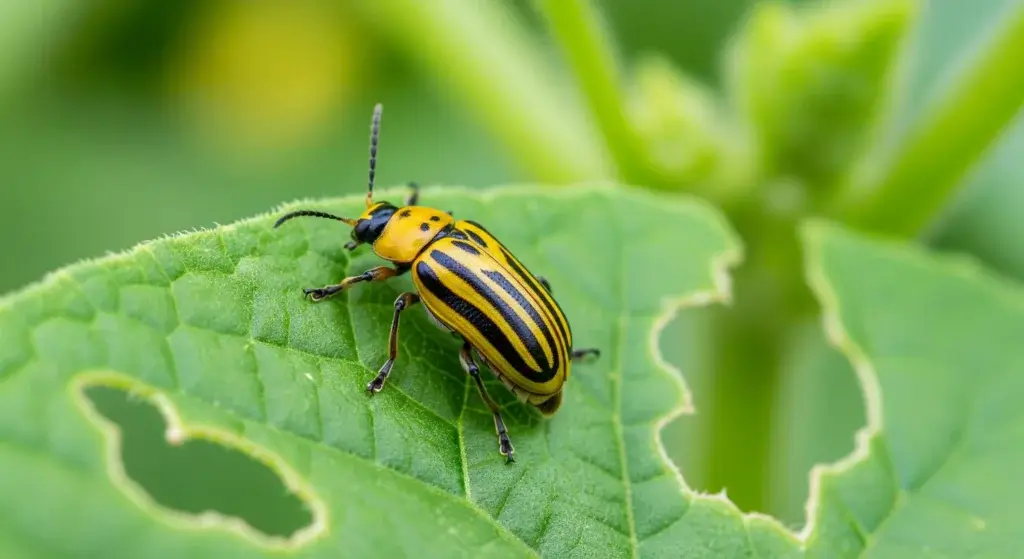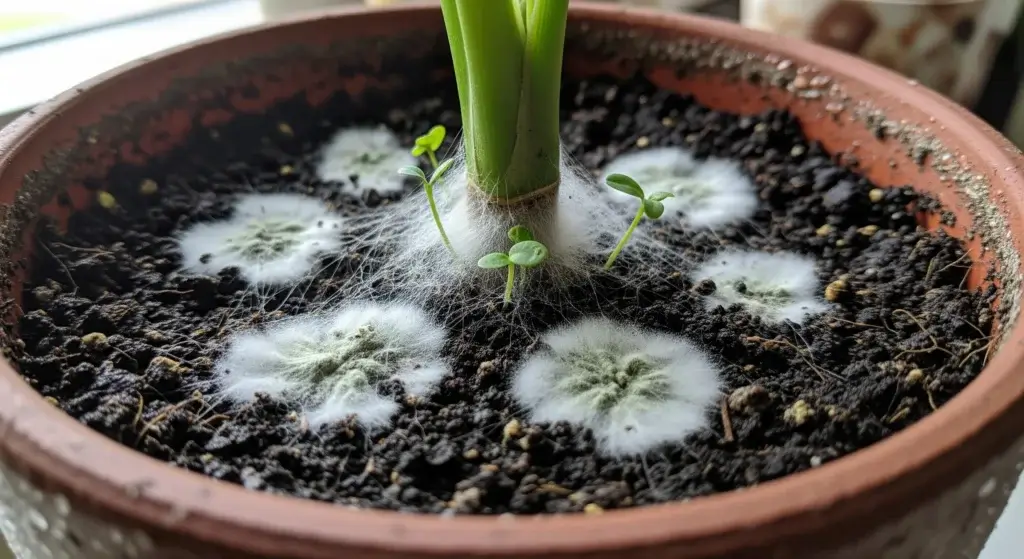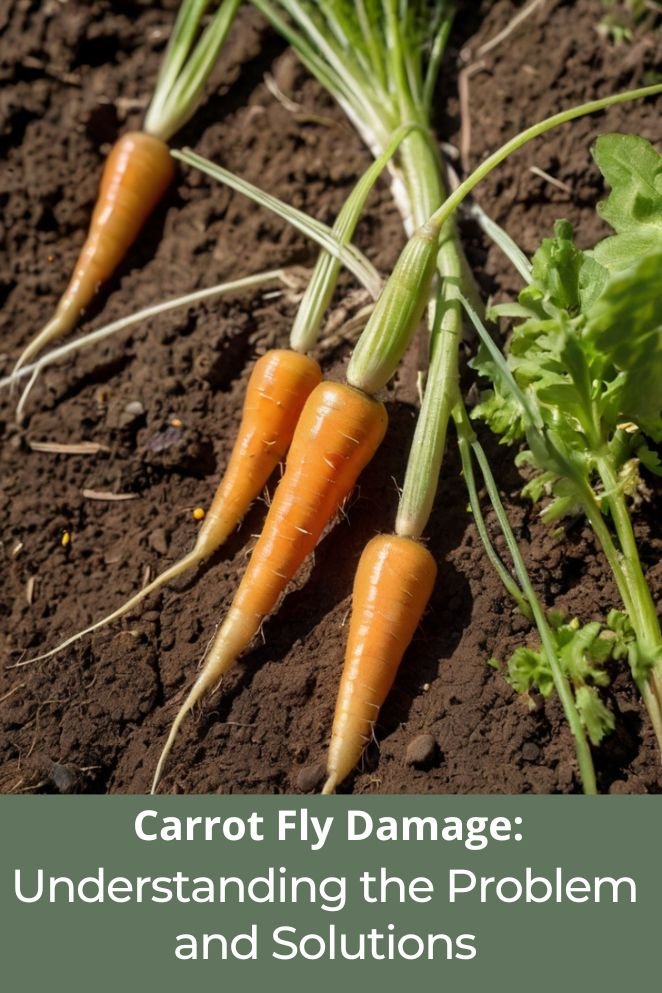
If you’ve ever grown carrots and noticed stunted growth, yellowing leaves, or worse, hollowed-out, discolored roots, you might be dealing with one of the most notorious pests in vegetable gardening—the carrot fly.
The carrot fly (Psila rosae), also known as the carrot root fly, is a small but persistent pest that can cause significant damage to carrot crops if not managed properly.
Understanding the signs of carrot fly damage, prevention methods, and effective control strategies can help you protect your harvest.
Damage Caused by Carrot Fly
The damage caused by carrot flies can be severe, particularly for carrot crops.
The adult carrot fly itself doesn’t cause harm; it’s the larvae that do the real damage.
After hatching, the larvae burrow into the soil and feast on the roots of carrots.
This can lead to unsightly and inedible carrots, reducing your crop yield dramatically.
- Root damage: The larvae create tunnels through the carrot roots, leading to rot and secondary infections.
- Stunted growth: Carrot plants affected by carrot fly larvae may exhibit slow or stunted growth due to the roots being damaged and unable to absorb nutrients efficiently.
- Economic loss: For commercial growers, carrot fly infestations can lead to significant financial losses. According to research, carrot fly infestations can reduce carrot yields by 30-60% in untreated areas .
Signs and Symptoms of Carrot Fly Damage
To manage carrot flies effectively, it’s crucial to recognize the signs of their activity.
Early detection can help prevent significant damage to your crop.
Here are some key indicators of carrot fly damage:
- Read also: The Hidden Dangers: Common Carrot Diseases and Pests
- Read also: Whitefly Damage Symptoms: Protecting Plants from Infestation
Visible damage to carrot roots
One of the most noticeable signs of carrot fly damage is the appearance of the carrot roots themselves.
When carrot fly larvae burrow into the carrots, they create dark, discolored patches on the surface.
This damage often makes the carrots look unappealing and can render them inedible.
Tunnels and galleries within carrots
Inside the damaged carrots, you may find small, winding tunnels or galleries created by the larvae.
These tunnels can be seen when you cut open a carrot, and they are often filled with dark, rotting sections.
The presence of these tunnels is a clear sign that the carrots have been infested.
Presence of carrot fly larvae
If you cut into a damaged carrot and notice small, white, worm-like larvae, it’s a strong indication that your crop is under attack.
These larvae typically measure about 8mm long and are a direct sign of infestation.
Stunted growth and yellowing of carrot plants
Above the soil, carrot plants affected by carrot flies may exhibit signs of distress.
You might notice stunted growth, where the plants do not grow to their full potential, or yellowing leaves.
This happens because the larvae are feeding on the roots, preventing the plants from absorbing the necessary nutrients and water, resulting in weak and underdeveloped plants.

Prevention Strategies
Taking preventive measures against carrot fly infestations is crucial for protecting your crop.
Once the larvae have invaded your carrot roots, they are tough to get rid of, so it’s best to focus on prevention.
Here are some effective strategies:
Crop rotation
Crop rotation is one of the most effective ways to prevent carrot fly infestations.
Carrot flies lay their eggs near carrot crops, and if you plant carrots in the same spot every year, the larvae will easily find your new crops.
By rotating your crops annually—planting them in different locations—you can disrupt the carrot fly’s life cycle and significantly reduce the risk of infestations.
Using row covers
Row covers are a practical and effective barrier against carrot flies.
By placing lightweight, breathable row covers over your carrot beds right after sowing, you can protect your plants from adult carrot flies trying to lay their eggs.
These covers still allow sunlight, water, and air to reach the plants while keeping the flies out.
Companion planting
Some plants naturally deter carrot flies.
Planting onions, leeks, or garlic near your carrots can help disguise the scent of the carrot plants, making it harder for carrot flies to locate them.
This method, known as companion planting, is a simple and organic way to lower the risk of carrot fly infestations.
Applying organic or synthetic insecticides
In severe cases where infestations are widespread, applying insecticides may be necessary to control carrot fly populations.
Organic options, like pyrethrum-based sprays, can be effective while causing minimal harm to beneficial insects.
Synthetic insecticides should be used as a last resort, as they can have negative impacts on the environment.
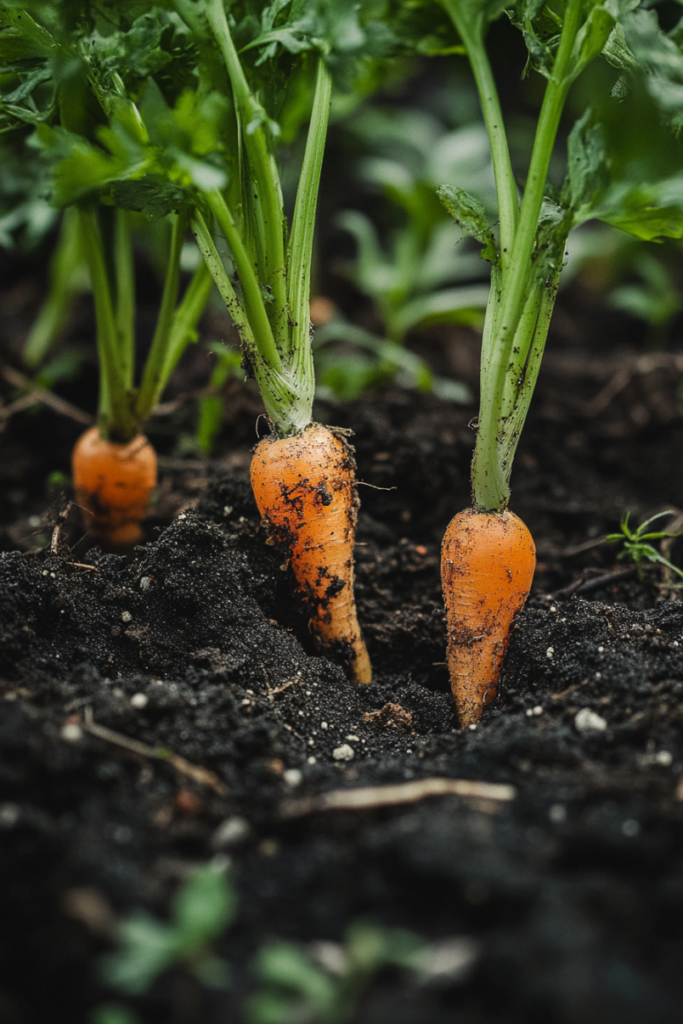
Organic Control Measures
For gardeners who prefer to avoid using chemical pesticides, there are several effective organic control measures to combat carrot flies.
Here are some popular options:
Neem oil
Neem oil is derived from the seeds of the neem tree.
It acts as a natural insecticide by disrupting the life cycle of many pests, including carrot flies.
Mix a neem oil solution according to the instructions on the product label and spray it onto your carrot plants.
This application can help prevent adult carrot flies from laying eggs and can reduce the survival rates of larvae.
Using neem oil regularly, especially when carrot flies are most active, can significantly protect your crop.
Diatomaceous earth
Diatomaceous earth is a fine powder made from the fossilized remains of tiny aquatic organisms called diatoms.
It is a natural pest deterrent.
Sprinkle diatomaceous earth around your carrot plants.
As carrot fly larvae crawl through this powder, it damages their exoskeletons, leading to their death.
This method is safe for humans and pets, making it an ideal choice for organic gardening.
Beneficial nematodes
Beneficial nematodes are tiny, microscopic worms that live in the soil.
They are natural predators of carrot fly larvae.
You can purchase beneficial nematodes from gardening stores or online.
Introduce them into your garden soil by mixing them with water and applying them to the soil around your carrot plants.
These nematodes seek out and kill carrot fly larvae without harming your carrots, pets, or other beneficial insects.
Intercropping with repellent plants
Intercropping involves planting different types of crops close together to enhance growth and deter pests.
Plant strong-smelling herbs like rosemary or thyme near your carrots.
These herbs can repel carrot flies, making it less likely that they will be attracted to your carrot crops.
This method not only helps keep pests away but also allows you to grow additional plants that can be beneficial in your kitchen.
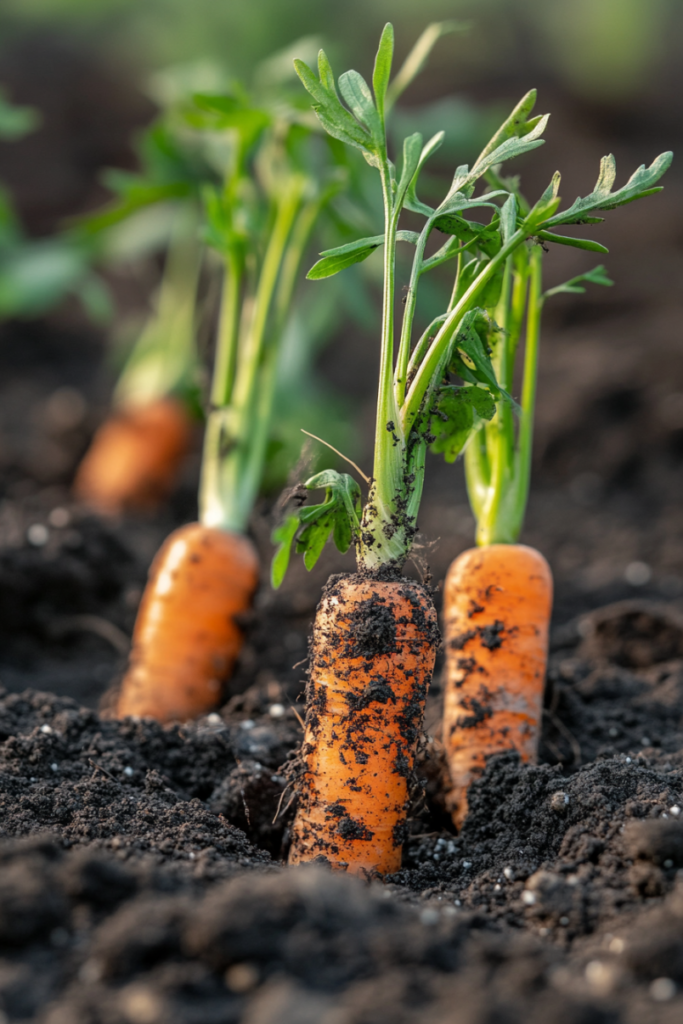
Cultural Practices for Prevention
In addition to specific organic controls, there are several cultural practices that can help reduce the risk of carrot fly infestations:
Proper soil preparation and fertilization
Healthy carrot plants are less susceptible to pests.
Proper soil preparation ensures that your carrots have a strong foundation for growth.
Loosen the soil to a depth of at least 12 inches to allow for healthy root development.
Mix in compost or organic matter to enrich the soil with nutrients.
This creates an optimal environment for your carrots to grow robustly.
Timely harvesting to reduce carrot fly attraction
Carrots that are left in the ground for too long can attract carrot flies searching for places to lay their eggs.
Keep an eye on your carrots and harvest them at the right time.
This minimizes their exposure to pests and ensures you enjoy fresh, healthy carrots without the threat of infestations.
Avoiding planting carrots near infested areas
If you’ve experienced carrot fly problems in the past, planting new carrots nearby can lead to a higher risk of re-infestation.
Select a different location in your garden to plant your carrots, ideally away from areas where you’ve had previous infestations.
This practice helps break the life cycle of carrot flies and reduces the chance of future problems.
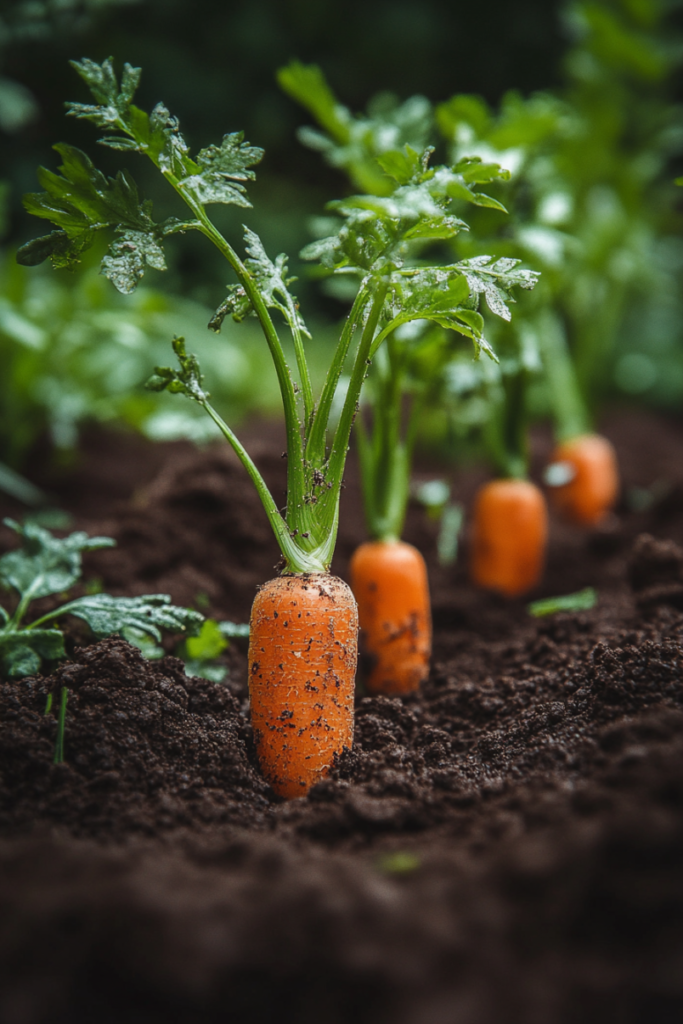
- Read also: Treating Whitefly on Plants: Effective Strategies for Pest Control
- Read also: Pest Damage on Vegetables: A Guide to Identification and Control
Final Thoughts
Carrot flies are a challenging pest for gardeners, but with the right prevention and control strategies, you can protect your crops and enjoy healthy, homegrown carrots.
By practicing crop rotation, using row covers, and employing organic control methods, you can effectively manage carrot fly populations and minimize damage to your carrot plants.
Staying vigilant and taking preventive measures can save you from the frustration of losing your crop to these persistent pests.


